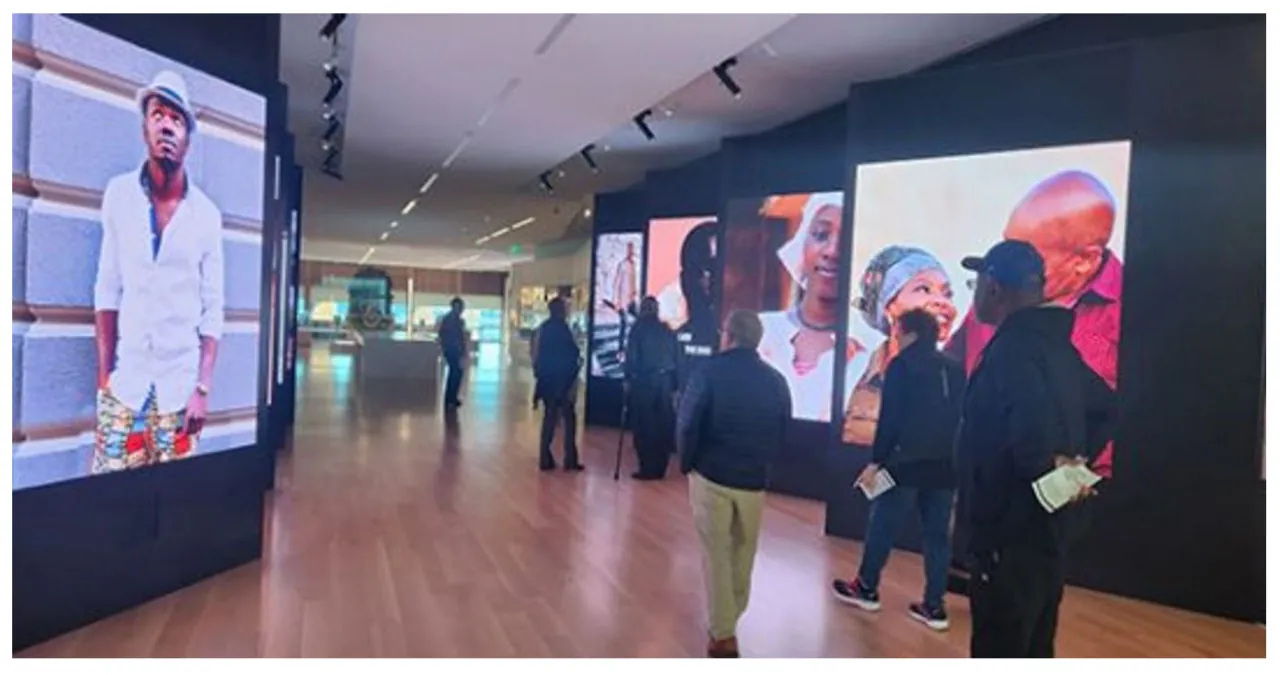A new museum is illuminating the history of African enslavement, focusing on their captivity in America and the profound impact their lives and labor have had on South Carolina.
The International African American Museum in Charleston, South Carolina, proudly celebrates the rich and often overlooked narratives of the African American experience on one of America’s most revered locations.
Art, artifacts, written and oral retellings, film, photographs, and the creative presentation of historical information all come together to tell these captivating stories.
In June 2023, after two decades of meticulous planning and dedicated fundraising efforts, the museum finally opened its doors. The museum boasts an impressive array of seven main areas, each offering a unique and captivating experience for visitors to explore.
– Transatlantic Experience: Explore the rich history of the transatlantic experience, delving into the complex connections and interactions between Europe, Africa, and the Americas.
– South Carolina Connections: Discover the unique ties that South Carolina has to the broader Atlantic world, and how its history is intertwined with the global forces of exploration, trade, and migration.
– Gullah Geechee: Learn about the fascinating Gullah Geechee culture, which is rooted in the African diaspora and flourishes in the coastal regions of South Carolina.
– African Roots & African Routes: Trace the African roots and routes that shaped the history and culture of South Carolina, highlighting the contributions and legacies of African peoples.
– Atlantic Worlds: Dive into the interconnectedness of the Atlantic worlds, examining the movement of people, goods, ideas, and cultures across the Atlantic Ocean.
– American Journeys: Uncover the diverse stories of individuals and communities who have embarked on American journeys, seeking new opportunities and facing challenges along the way.
– Center for Family History: Access the resources and expertise of the Center for Family History, empowering individuals to explore and connect with their ancestral heritage.
As visitors stroll through the different galleries, they encounter a multitude of captivating experiences. These include immersive oral narratives that transport them back to the time of enslavement, enchanting melodies that fill the air, captivating large-format videos, the resonating voices of present-day South Carolinians, and thought-provoking digital exhibitions. One such exhibition highlights the captivating history of the Seashore Farmers Lodge, while another delves into the enduring legacy of the International Longshoremen’s Association.
The display wall honors African-American South Carolinians who have made significant contributions to the state, the nation, and the world. It showcases their stories, photographs, and memorabilia, highlighting their remarkable achievements.
The museum brings attention to the profound losses endured by Africans during their journey to America, including the deprivation of freedom, the erasure of their names, the separation from their families, and tragically, the loss of countless lives. Moreover, it sheds light on the resilience of the enslaved individuals who managed to preserve certain cultural traditions despite their circumstances, as well as the numerous rebellions that occurred as acts of resistance.
The labor of enslaved people has always played a crucial role in South Carolina’s economy, particularly in the fields of agriculture and city development.
According to an exhibit, the economy of the Carolina Colony and later the US state was heavily dependent on a profitable cash crop known as Carolina Gold, particularly. Enslaved individuals, including men, women, and children, endured harsh conditions and deadly diseases to produce rice on a large scale. This rice production brought immense wealth to slaveholders and merchants.
This is a model that showcases the process of cultivating tidal rice fields on a low country plantation. It demonstrates the various steps involved, including preparing the fields, weeding and flooding, final flow, harvest, and processing.
At the Center for Family History, we strive to help individuals connect with their family histories. Our research center offers a range of services, including access to digital archives and virtual one-on-one genealogy consultations. These consultations are available for a fee, providing visitors with personalized assistance in their genealogical research.
“Our website proudly showcases a wide range of digital archives that encompass various records. These include marriage records, bible records, obituaries, funeral programs, records for free people of color, United States Colored Troops pension files, and collections sourced from familysearch.org,” as mentioned on the museum’s official website.
The museum’s location is just as captivating as the displays housed within its walls. Referred to as a “sacred site” by the museum, Gadsden’s Wharf, along with several other locations in the Charleston Harbor, holds historical significance as the place where approximately 40 percent of African captives first set foot in America.
One plaque on the outside of the museum by the waterfront states that between 1670 and 1808, as many as 260,000 captive Africans arrived in South Carolina, with the majority being brought through Gadsden’s Wharf.
According to the museum’s website, the African Ancestors Memorial Garden is situated below the museum, appearing to “hover” 13 feet above the historic wharf. The garden is designed with various elements, from a palm grove featuring Canary Island Palms, which symbolize the African Diaspora, to the Sweetgrass Field where waist-high grasses are found, serving as the fundamental materials for the Lowcountry basket weaving traditions.
The Tide Tribute is a remarkable feature in the garden, showcasing relief figures that symbolize individuals who were once held captive in ships anchoring at Charleston Harbor. The website highlights that as the tide ebbs and flows, the shallow pool of water fills and empties, symbolically covering and revealing the shapes of those honored by the tribute.
Read More:
- Colorado man receives over 2 years in federal prison for pleading guilty to gun crime
- Nevada Implements 80 New Laws in 2024 to Promote Progress and Change

